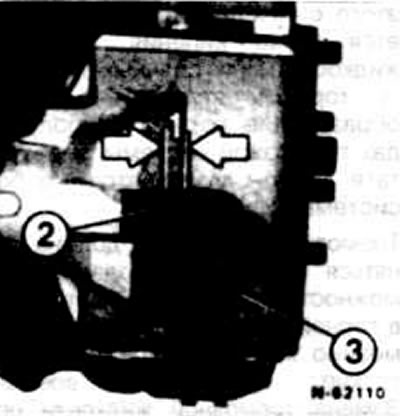Raise the car and remove the wheels.
Disc brake

Visually check from the front through the brake piston housing the thickness of the inner lining -1- without the metal rear plate -2-. 3 - Brake disc.

Visually check the thickness of the outer brake lining -1- without the metal rear plate -2-. If in doubt, remove the pads and measure their thickness with a caliper.
The wear limit of the disc brake lining is 2 mm.
Note! Typically, a brake lining 1 mm thick can withstand another 1000 km of the car. This applies to difficult operating conditions. Under normal conditions, the pads can withstand even more mileage. With disc brake lining thickness of 5.0 mm (without rear metal plate) the remaining service life of the linings is at least another 3500 km.

Remove the rubber cap from the inspection hole on the rear wheel brake mount and shine a flashlight into the hole. The wear limit has been reached. if the lining has a thickness of 1 mm. If in doubt, remove the brake drum and measure the lining thickness.
If the wear limit is reached, replace the brake pads. Be sure to change all pads on the same axle.
Install and screw the wheels.
Lower the car to the ground.
Tighten the wheel nuts crosswise to 100 Nm.
Visitor comments